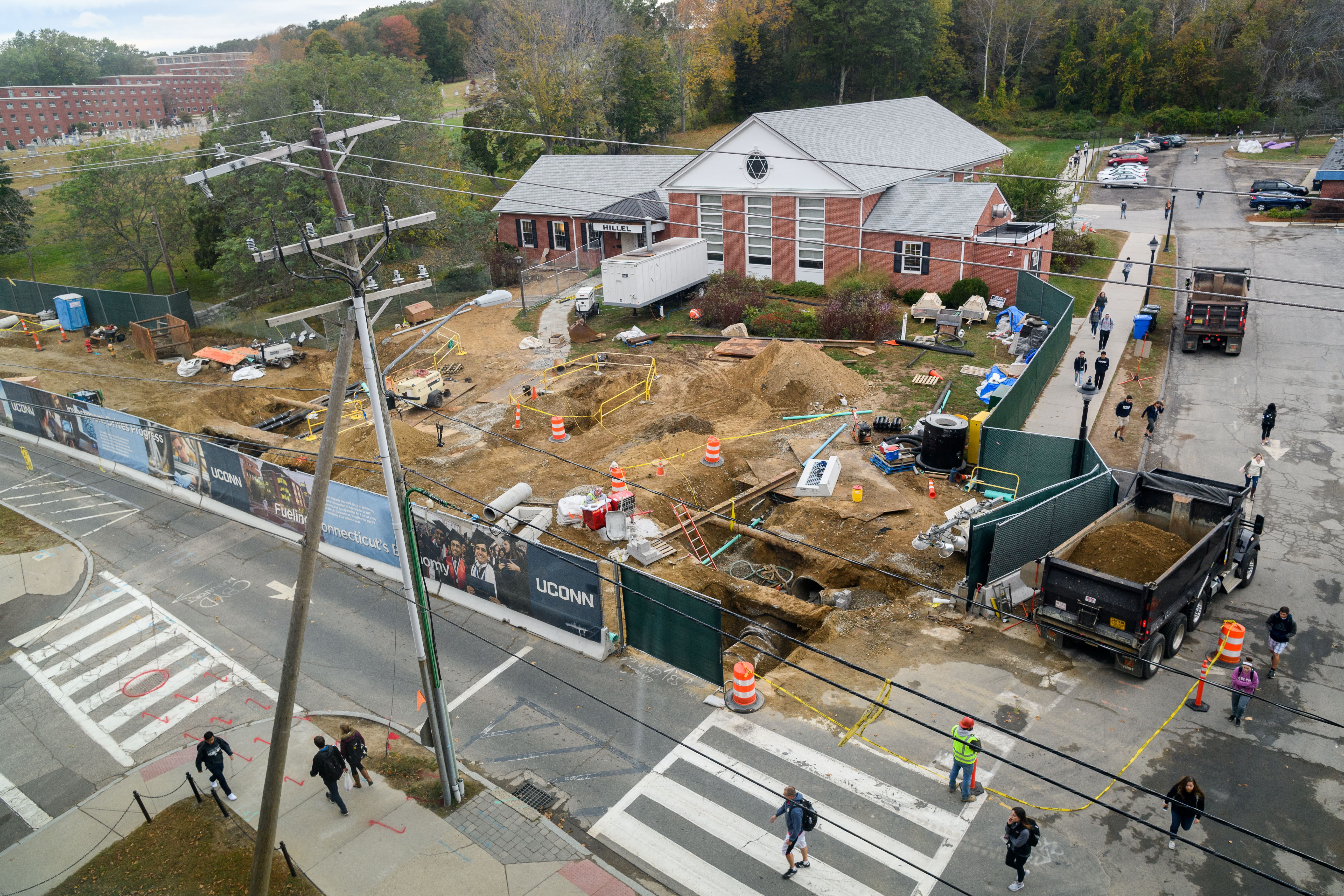Pipe dreams? Not at UConn.
Major pipe replacement projects on the Storrs campus have resulted in benefits both from an economic and environmental standpoint, with the prospect of more to come.
The University has replaced 8,000 linear feet of steam and condensate return piping over the last several years, with the majority of the work happening on North Eagleville and Hillside roads. There are also several new replacement projects in the planning stages, as some of the piping on campus is nearing 80 years old.
These projects result in significant energy savings, as well as reduced water consumption based on increased condensate returning to the Central Utility Plant.
“We are really talking about a big loop,” said Mark Bolduc, the Energy and Compliance Manger in Facilities Operations. “Steam is generated at the Central Utility Plant and is pushed out to campus, often several miles. The steam goes into the buildings, goes through a heat exchanger, meets the heating needs of the building, the heat exchanger converts the steam to condensate, and that water is pumped back the to the plant to be used again for steam production.”
“In some of our older piping, there are holes and leaks from the aging process, and we are losing lots of steam and condensate,” he said.
The average condensate returned to the plant as a percentage of steam production for the first six months of 2019 is 62 percent, compared to 44 percent in 2018.
That means a savings of 3.2 million gallons of water on an annual basis, or 18,000 gallons per day. That means UConn is saving enough water every two-and-a-half days to fill up the swimming pool at the Wolff-Zackin Natatorium connected to Gampel Pavilion. This also reduces the amount of water taken from the Willimantic and Fenton river wellfields.
It’s not only good for the environment, though, but also for the bottom line. UConn projects savings of approximately $30,000 worth of water and energy costs in 2019.
There is also an energy savings as the fuel needed to convert water to steam from one of the Central Utility Plant’s five boilers operational hours was used just for heating the water lost through leaks before the pipe replacement projects. The supplemental water used to replace the leaked volume arrives to campus at ambient temperature while the condensate returns at a closer temperature to steam. The hotter condensate then provides additional fuel savings as less fuel is required to heat it back to steam temperatures.
The projects that are in the planning stages will further increase the energy, environmental, and financial savings for UConn.



